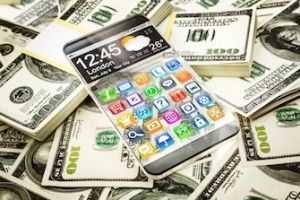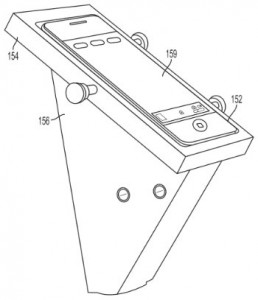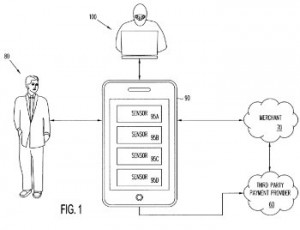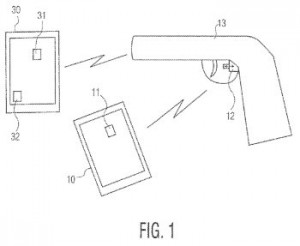 Smartphones and mobile electronic devices have taken the world by storm. In our brief histories of both Android and the iPhone, we’ve noted that there are well over a billion Internet-connected electronic devices which provide software services running on an operating system platform. The industry is making an incredibly large amount of money. In 2015 alone, Xiaomi plans to sell 100 million smartphones, and that company is by no means the largest producer of smartphones, although they are a growing one.
Smartphones and mobile electronic devices have taken the world by storm. In our brief histories of both Android and the iPhone, we’ve noted that there are well over a billion Internet-connected electronic devices which provide software services running on an operating system platform. The industry is making an incredibly large amount of money. In 2015 alone, Xiaomi plans to sell 100 million smartphones, and that company is by no means the largest producer of smartphones, although they are a growing one.
The ubiquity of smartphones has given rise to an incredibly large number of patents issued to protect technologies vital to these devices. As of October 2012, there were 250,000 active patents protecting technologies related to smartphones, representing one out of every six active patents for any invention. Safe to say, there are probably many more of those active patents now. Some companies are amassing huge portfolios of these patents. For example, Samsung filed 2,179 smartphone patent applications in 2013, trebling the total of patent applications filed by Apple that year for mobile telephony innovations.
Patents mean that innovation is happening and it’s good to see so much activity in this industry. Still, the sheer number of patents in the smartphone realm seem to have created a bit of malaise among those who question the value of patents. There are those who argue that patents end up making these technologies more expensive and they’ve even come up with the math to try and support it to shine a negative light on patents.
In addition, there is a palpable fear of the consequences of enforcing patent rights right now. Many detractors of the patent system point to abusive behaviors involving demand letters sent to businesses that are supposedly infringing on a patent. And, in some instances, that abusive behavior does exist. To other people, the “smartphone patent wars” that have been waged over the past few years is more proof of the “absurdity” of patents and our patent system. Most recently, Microsoft has sued Kyocera for infringing on intellectual property; Microsoft maintains that multiple Kyocera smartphones infringe on seven of Microsoft’s patents. As these cases play out, the ensuing litigation or licensing agreements have cost companies hundreds of millions of dollars in the past.
Yet it’s impossible to actually support the idea that patents harm smartphone innovation because there is no consumer product that has changed so much over the past decade thanks to innovation. And if patents would get in the way of anything, it would definitely get in the way of an industry which accounted for one out of every six active patents. But more smartphones are being sold than ever before and new improvements continue to be developed, from curved touchscreens to waterproof phones to dual-screen phones.
Smartphone technologies are even coming to the vehicle dashboard. Apple, for example, is developing a CarPlay system that will offer software services on an in-vehicle dashboard. The system can allow an iPhone to connect with and control the dashboard display. That’s a feature that Apple might not be able to advertise without without holding an IP portfolio that includes patents like U.S. Patent No. 8947202, titled Accessing a Vehicle Using Portable Devices. Apple could still develop the smartphone/vehicle system, sure, but without holding the patent rights it has no protections on the work of teams of inventors that have developed innovations like this. That would lead to market chaos at some point.
By all accounts, the multi-million dollar lawsuits being filed by Samsung, Apple, Google, Microsoft and other companies in this seemingly Byzantine patent war should be dwindling in the coming months. The major battle lines seemed to have been drawn when Rockstar, a consortium of companies including Microsoft, Sony and Apple, bought more than 6,000 patents from communications company Nortel when it was going bankrupt in 2011. The move was meant to challenge Google and was probably tied to a personal vendetta of Steve Jobs; the former Apple CEO was quoted by biographer Walter Isaacson as saying that “I’m going to destroy Android, because it’s a stolen product. I’m willing to go thermonuclear war on this.”
When Steve Jobs does it, it’s a valiant defense of his own product that his company developed and owned. Why does someone get labeled a patent “troll,” then, for making essentially the same decision? It’s especially confusing given that the receipt of a demand letter, which is where much of the fear of trolling lays, is not nearly as terrifying as the prospect of thermonuclear war with Steve Jobs and his extremely well-funded company that can afford to wage a patent war on whatever scale is chosen.
This war is over, however. The Rockstar Consortium sold 4,000 of the Nortel patents to RPX in December 2014 and RPX plans to license those technologies to other companies. There will continue to be some battles waged in court and sending a demand letter is a necessary step that often leads to a licensing agreement for the technology. As we’ve pointed out here on IPWatchdog, abusive demand letter behaviors, where a patent owner asserts a right in bad faith, are certainly undesirable. The real question is how to curtail that behavior without creating sweeping changes to the patent system with legislation like the Innovation Act, which conflates the idea of a non-practicing entity, such as RPX, with a patent troll.
[Companies-1]
A Couple of Recent Smartphone Patents and Their Life-Changing Potential
Smartphones and mobile technologies are still proving to be incredibly disruptive to the corporate world. We’re already seeing the inclusion of software services in eyeglasses and vehicle dashboards. Today we thought we’d take a look at some recently issued smartphone patents and share a couple that we found interesting.
 Sensor technologies are very important to smartphone development. U.S. Patent No. 8947656, titled Smartphone Biosensor, is assigned to the University of Illinois. It claims a mobile device including an image sensor that can detect the result of a biomolecular assay. The system essentially uses a smartphone camera to serve as a light source for immunoassays or other microfluidic or optofluidic tests that can be performed directly on a smartphone. In other words, the smartphone itself becomes a laboratory within which a computer takes the place of trained technicians in order to test for viruses or bacteria. Someday, someone is going to be very happy that this technology exists and was brought to market (they’ll also be happy for the Bayh-Dole Act and its ability to allow the University of Illinois the chance to commercialize this technology).
Sensor technologies are very important to smartphone development. U.S. Patent No. 8947656, titled Smartphone Biosensor, is assigned to the University of Illinois. It claims a mobile device including an image sensor that can detect the result of a biomolecular assay. The system essentially uses a smartphone camera to serve as a light source for immunoassays or other microfluidic or optofluidic tests that can be performed directly on a smartphone. In other words, the smartphone itself becomes a laboratory within which a computer takes the place of trained technicians in order to test for viruses or bacteria. Someday, someone is going to be very happy that this technology exists and was brought to market (they’ll also be happy for the Bayh-Dole Act and its ability to allow the University of Illinois the chance to commercialize this technology).
Increasingly, smartphones are being used to conduct electronic transactions. U.S. Patent No. 8978111, titled Method and Apparatus for Using Sensors on a Portable Electronic Device to Verify Transactions. Assigned to eBay, it protects a system capable of receiving sensor data and  analyzing that sensor data to determine that an electronic device user has authorized a transaction between devices. The transaction could be either a financial transaction or a request to access an account. It’s important to remember that, in the case of both this and the above patent, the initial claim is very long, which creates more narrow protections so not every financial transaction completed through every smartphone in the world is subject to this patent, just the transactions using this very specific and claimed system. However, what both of these inventions have given us is, essentially, both a portable laboratory and a digital wallet.
analyzing that sensor data to determine that an electronic device user has authorized a transaction between devices. The transaction could be either a financial transaction or a request to access an account. It’s important to remember that, in the case of both this and the above patent, the initial claim is very long, which creates more narrow protections so not every financial transaction completed through every smartphone in the world is subject to this patent, just the transactions using this very specific and claimed system. However, what both of these inventions have given us is, essentially, both a portable laboratory and a digital wallet.
Smartphones are being used to accomplish many things, even gun safety. A technique to prevent the operation of a gun is at the center of U.S. Patent No. 8931195, titled Secure Smartphone-Operated Gun Lock with Means for Overriding Release of the Lock and assi gned to Karl F. Milde Jr. of Mahopac, NY. Again, the patent features an incredibly elongated first claim that essentially protects a gun locking and unlocking device which is operated by a smartphone. Part of the system utilizes a logic device that automatically locks the gun when it’s near a school or other prohibited areas. The logic device is also used in the process of determining that a gun owner is intoxicated or acting in an irrational manner; if this is detected, the gun is locked. This writer should never have to explain why that’s an important technology to have. Patents protect these innovations and those protections are necessary for these technologies to proliferate through the market. We should all be very grateful for the patents that have allowed this to happen.
gned to Karl F. Milde Jr. of Mahopac, NY. Again, the patent features an incredibly elongated first claim that essentially protects a gun locking and unlocking device which is operated by a smartphone. Part of the system utilizes a logic device that automatically locks the gun when it’s near a school or other prohibited areas. The logic device is also used in the process of determining that a gun owner is intoxicated or acting in an irrational manner; if this is detected, the gun is locked. This writer should never have to explain why that’s an important technology to have. Patents protect these innovations and those protections are necessary for these technologies to proliferate through the market. We should all be very grateful for the patents that have allowed this to happen.

![[IPWatchdog Logo]](https://ipwatchdog.com/wp-content/themes/IPWatchdog%20-%202023/assets/images/temp/logo-small@2x.png)

![[Advertisement]](https://ipwatchdog.com/wp-content/uploads/2024/04/Patent-Litigation-Masters-2024-sidebar-700x500-1.jpg)

![[Advertisement]](https://ipwatchdog.com/wp-content/uploads/2021/12/WEBINAR-336-x-280-px.png)
![[Advertisement]](https://ipwatchdog.com/wp-content/uploads/2021/12/2021-Patent-Practice-on-Demand-recorded-Feb-2021-336-x-280.jpg)
![[Advertisement]](https://ipwatchdog.com/wp-content/uploads/2021/12/Ad-4-The-Invent-Patent-System™.png)






Join the Discussion
10 comments so far.
Gene Quinn
March 22, 2015 05:14 pmPG-
First, it wasn’t my article.
Second, you say: “we can’t conclude that, as this article suggests, that the innovation in the smartphone arena would not have occurred but for the patent incentive. It’s an especially dubious assumption in the industries where improvements can be made quickly and with relatively little investment.”
It is really hard to have a conversation with you on this point if you buy into mythology as if it is fact. It took over 7 years to develop swipe functionality. It is pure fantasy to believe that any company would have spent that amount of time and energy to create something without exclusive rights.
The problem you seem to have is you think innovating is easy and will just come naturally. That is simply not how things work.
You also say: “Your hostility to this common counter view is understandable given your specialization in the software area.”
First, I’ve stopped practicing. Second, I wasn’t hostile at all. A little shocked that you don’t understand what you are commenting about, but not hostile.
Third, why would it matter if a myth is commonly held? You say this as if the fact that people commonly believe something that is wrong that lends credibility. Well, a whole lot of people thought the earth was flat once upon a time. Not sure that widespread believe justifies anything. In fact, widespread believe is frequently explained in many ways other than the belief being correct.
-Gene
Anon
March 20, 2015 06:37 pmPG,
No matter how polite a view it is that you think is being offered, it is a view that has been repeatedly debunked.
Yes, you personally may have not been so informed, but that information is out there aplenty.
For immediate example, you now lean to a “but for” view of having a patent system. The patent system does not – and never has – existed solely as a “but for” system. Yes, the patent system does exist to help the situation of “but for.” But by no means is that the only reason the patent system exists.
You will have to excuse what you consider to be “condescending.” It is surely not the intent to be so. However, you might want to consider that your view is not a fresh view, that your view has not been advanced a thousand times already and a thousand and one times it has been debunked. You might also want to consider that if you were interested, a full and robust understanding is out there for you to grab. Lastly, you might also want to consider that often – much, much, much too often – people want to have views that ignore this deeper and readily available understanding. People want not to have a view based in understanding, and will pretend that such understanding not only does not exist, but if it did exist, such must be wrong. Such people often post as you posted here – as if reading from a script.
PG
March 20, 2015 04:32 pmGene, Of course I understand the theory that the exclusivity granted in a patent purportedly serves as the incentive for filing patents. My point was only that we can’t conclude that, as this article suggests, that the innovation in the smartphone arena would not have occurred but for the patent incentive. It’s an especially dubious assumption in the industries where improvements can be made quickly and with relatively little investment. Compare this pharmaceutical industry where I absolutely buy the incentive theory given the time to market and amount of necessary investment. Your hostility to this common counter view is understandable given your specialization in the software area. But your dismissal of a polite counter view with a condescending post is surprising and not well-received.
Gene Quinn
March 20, 2015 03:03 pmPG-
You ask: “how can we conclude that patents do anything to motivate innovation?”
OK… I’ll bite and assume that you don’t really understand. Patents clearly motivate innovation. You will agree if you read and understand the following:
https://ipwatchdog.com/2014/05/08/reality-check-patents-foster-innovation-and-economic-activity/id=49452/
https://ipwatchdog.com/2014/05/12/the-story-of-how-patents-promote-innovation/id=49520/
https://ipwatchdog.com/2014/07/21/promoting-innovation-the-economics-of-incentives/id=50428/
https://ipwatchdog.com/2014/09/25/improving-innovation-climate-critical-to-us-economic-future/id=51353/
We have numerous other articles that explain patents and why it is necessary to provide incentive, but these are a good start on your road to enlightenment. Although, I must stay it is at least a little surprising that you don’t understand these basic concepts.
-Gene
Anon
March 19, 2015 05:54 pmPG,
That sounds like you read it right off of a script and are completely unaware of the actual situation.
PG
March 19, 2015 03:29 pmSure, patent filings certainly evidence the fact that innovation is alive and well in this industry, but how can we conclude that patents do anything to motivate innovation? Needless patent litigation in this industry has done little more than serve as a tax on providers and customers. Given how quickly the technology evolves, many things that were true innovations when the patent was filed are stale by the time the patent issues. This is particularly true for a crowded field where many filings are not around fundamental technologies but rather on transitive, feature advances. At that point, the only real value in these patents lies in the ability of patent attorneys and their shell clients to creatively, and arguably unethically, stretch their scope to reach unrelated, original and innovative technologies the inventors of the patents did not conceive. The standard of proof required for a finding of invalidity in court and the high cost of patent litigation have led to abusive licensing and litigation practices by NPEs. The benefits of curtailing these practices through patent reform greatly outweigh any adverse impacts on true innovators, which effects are speculative as far as I can tell.
AS
March 19, 2015 09:36 amAre you scared your kids might be using Yahoo Messenger for the wrong kind of conversations? Yahoo Messenger commonly used by your employees but you have no idea what they are doing on it? How would you like to be able to know exactly who they are calling and what they are chatting about? Now 1TopSpy captures all Yahoo Messenger chats messages so that you never miss a thing.
Gene Quinn
March 17, 2015 09:00 pmflamencoguy-
What is the basis that most patents are duplicates? You do realize that a patent issued on one invention cannot be reissued or a duplicate, correct? What you say suggests a fairly unsophisticated understanding of patents. While multiple patents can cover any single innovation patents are not duplicative.
As far as auto-correction being available for years, that isn’t the legally relevant question. When was the invention conceived? Did you even both to look? In most cases when people like you say that something has been around for years, or even a decade or more, the patent was filed well before then and the invention made well before the patent application was filed. So your protesting that a patent that issued many years ago is problematic because the innovation has now become ubiquitous is quite dubious.
Facts matter. I suggest that you inform yourself. Everyone is entitled to an opinion, but an opinion built on an ignorant foundation isn’t worth anything.
-Gene
flamencoguy
March 17, 2015 06:57 pmI would conclude that most of the patents are duplicates or overlap others.
Some software patents are not innovative or necessarily apply only to smartphones. Some are designed to restrict the competition from using the same ideas. e.g. Auto-correction has been available on a PC for years yet Apple was able to sue Samsung using this patent among other similarly questionable patents. I urge you to dig deeper below the surface and see what lurks there.
Please also check out Foss Patents
Curious
March 17, 2015 10:36 amThere are those who argue that patents end up making these technologies more expensive and they’ve even come up with the math to try and support it to shine a negative light on patents.
I read the article that accompanied this quote — as well as the paper upon which the article was based. Basically, the underlying premise was that $140 of a $400 phone could be paid in royalties based upon patents. However, when reading the paper, it was clear that they were making a lot of assumption and the $140 figure would never exist is real life (not even close). However, that $140 number was part of the headline to the article, and I’m sure it will become a “known fact” that will be subsequently quote by the anti-patent crowd for years to come.
The interesting thing about the paper was its lengthy discussion of all the underlying technology that goes into the phone. I have made this point before, but a mobile phone is probably one of the most sophisticated (particularly for its size) devices ever made by mankind. The amount of technology embodied in a single smart phone is mind-boggling.